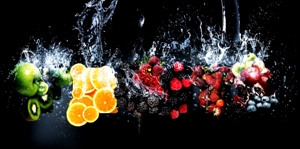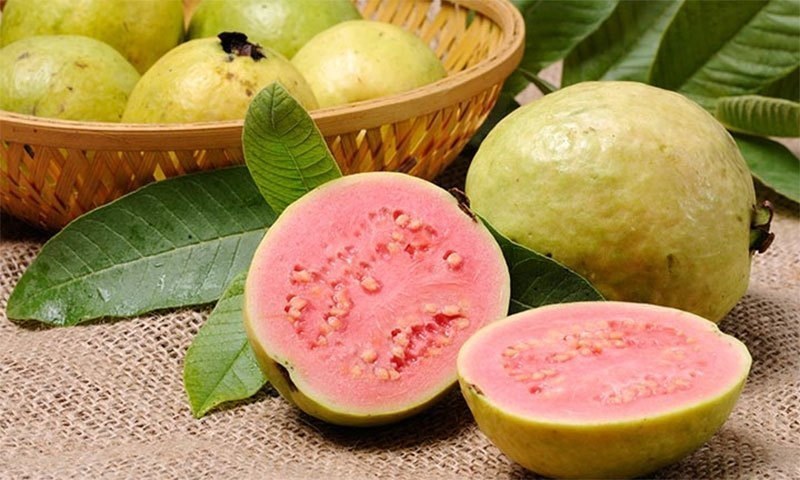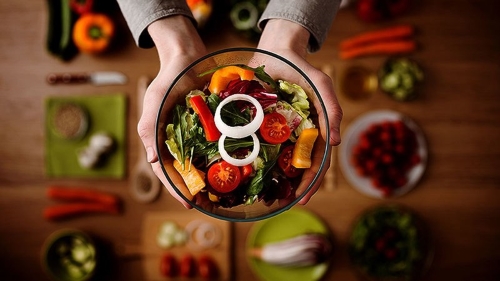Health

The virus killed 14 birds at an unspecified location in Riyadh, leading to the culling of about 60,000 birds in total

Saudi Arabia has confirmed an outbreak of highly contagious bird flu in Riyadh that led to the culling of nearly 16,000 ducks.
Based on information from Dr Ali Al Doweiriej, director general of Veterinary Health and Monitoring Department, the highly pathogenic H5N8 strain infected and killed 14 birds at an unspecified location in the Saudi capital, says the World organisation for Animal Health (OIE), which is based in Paris. Other birds in a flock of around 60,000 exposed to the virus were culled.
Bird flu strains have hit poultry flocks in a number of countries across the world in recent years, with some types of the disease also causing human infections and deaths.
Saudi Arabia this year imposed restrictions on poultry imports from countries such as Bulgaria in an effort to prevent the disease spreading. The Saudi ministry of environment, water and agriculture has also taken other preventive measures including collecting samples for testing and preparing an emergency plan. Last week, the ministry lifted a temporary ban on importing poultry and eggs from Greece, the Czech Republic, Romania and Mozambique after receiving confirmation from the OIE that there had been no new outbreaks of bird flu in those countries in the past three months.
Avian or bird flu is caused by a type of influenza virus that is hosted by birds but may infect several species of mammals, including horses, seals, whales, pig and humans. The virus was first identified in Italy in the early 1900s and has now spread worldwide.

My dad was big on juicing, and here I refer to the ’70s era, when only a few indulged in such uppity pastimes. One fine day he picked up a juicer, and suddenly orange juice, apple juice and, most importantly, carrot juice became a daily breakfast fare. I loved the little talks I got while drinking the juice, especially carrot juice. “Beta, for sure your eyesight will remain 20/20 forever if you drink a glass of carrot juice every day.” Rightly so, I don’t need glasses at this ripe old age a little south of 50.
And then there was my school friend Ayla, whose older sister developed an orange hue to her skin tone because she ate a bucket load of carrots while on a ‘teen years-onset-induced diet’. Hence the carrot anecdotes I have are many, but for now I’ll introduce you to some interesting history notes about the journey of the carrot.
Borrowing from the article Food Stories: Gajar Ka Halwa, “Carrots were indigenous to Afghanistan for almost 5,000 years. They came in colours such as red, yellow, black and white, but not orange, until the 17th century when the horticulturalists in the Netherlands decided to honour William of Orange, from the House of Orange, by creating an orange carrot. Though many believe that it was a coincidence, and the orange colour was a mutation of the red and yellow carrot and had no significant link to the Royal House of Orange, this new orange carrot was sweeter, prettier and of a non-sticky variety, making it popular amongst the cooks of the world. Legend has it that the Sikhs from Punjab introduced it to the house of Mughals.”
This simple winter vegetable can be transformed into delicious dishes
The cooks in the subcontinent liked the new imported carrot and the sweetness that came with it. It was an era when new cuisines were being developed by chefs and connoisseurs and the new carrot proved to be something to be experimented with to make halwa, with sugar, milk and butter, sans the flour and nuts.
Punjab apparently took an instant liking to it, and began to develop innovative new recipes, sweet and savoury. It was a vegetable that was harvested in abundance in winters and the cooks came up with a hot delicious dessert best served any time of the day, before or after a meal, or as a side with chai or doodh pati. Gajar ka halwa was an instant hit all over the Indian subcontinent.
Needless to say, I’m a big fan of carrots, may it be sweet or savoury, or a little tangy, like the carrot achar. Hence, I share with you my three favourite carrot recipes, from my kitchen to yours.
GAJAR, MATAR, AALO SABZI
INGREDIENTS
2 cups chopped potatoes
2 cups chopped carrots
1 cup frozen or fresh peas
1 teaspoon cumin seeds
1 teaspoon mustard seeds
1 onion, chopped
1 tomato, chopped
1 green chilli, finely chopped
½ teaspoon turmeric powder
½ teaspoon garam masala
1 teaspoon amchoor powder
Salt to taste
4 to 5 tablespoons oil (or as desired)
Curry leaves
Garnish with chopped coriander, lemon wedges and green chillies
METHOD
Heat oil, add cumin, curry leaves, mustard seeds, turmeric, onions, fry for a few minutes and toss in the vegetables. Cover and cook for 15 to 20 minutes on medium heat, stirring and spraying with water, periodically, once vegetables are tender, add all the masalas, cook for a few minutes, garnish and serve.
GAJAR KA HALWA (SERVES 10 TO 12)
INGREDIENTS
1 kg carrots (orange)
1 ½ to 2 litres of milk
½ pint Half-and-Half
1/3 pint heavy whipping cream
1 ¾ cups sugar
2 to 3 tablespoons butter (unsalted)
¼ cup oil
8 to 10 cardamoms
1 tablespoon raisins
2 tablespoons blanched and chopped almonds
METHOD
Lightly peel and grate carrots and set aside. Bring milk to boil and add the carrots, let the milk and carrot mixture come to a boil then add half-and-half and sugar, stirring constantly. Keep stirring until the mixture comes to boil, reducing heat to medium. Once the milk evaporates (should take one-and-a-half to two hours) add heavy cream, stirring constantly. Once cream evaporates, add butter, oil and cardamoms stirring constantly, keeping the flame medium to high. Keep stirring until oil separates, and the colour is a rich beautiful deep orange. Garnish with raisins and almonds and serve.
CARROT JUICE
INGREDIENTS
2 pounds carrots, chopped
4 or more cups water
1 can condensed milk, or malai with sugar (I prefer it with condensed milk)
Dash of nutmeg/cinnamon or green cardamom
1 teaspoon vanilla
½ teaspoon fresh ginger
METHOD
Blend carrots in a blender, adding water; sieve through mulmul (muslin) cloth. Squeeze extracting all juice, discard the pulp and pour the juice into the blender, adding all ingredients. Puree and serve hot or chilled.
Published in Dawn, EOS, December 3rd, 2017

کیلے دنیا میں سب سے زیادہ پسند کیے جانے والے پھلوں میں سے ایک ہے اور اقوام متحدہ کے مطابق دنیا بھر میں اوسطاً ہر سال 18 ملین ٹن کیلوں کی کھپت ہوتی ہے۔
یہ پھل پوٹاشیم اور پیسٹین (فائبر کی ایک قسم) سے بھرپور ہوتا ہے اور اس کے ذریعے جسم کو میگنیشیم، وٹامن سی اور بی سکس بھی مل جاتے ہیں۔
تاہم جہاں اس کے متعدد فوائد ہیں، وہیں اس کے کچھ نقصانات بھی ہیں اور یہ دونوں آپ نیچے جان سکتے ہیں۔
فوائد
دل کی صحت
کیلے دل کے لیے اچھے ثابت ہوتے ہیں جس کی وجہ ان میں موجود پوٹاشیم ہے اور دل کے افعال کے لیے یہ ضروری ہوتا ہے، اسی طرح سوڈیم یا نمکیات نہ ہونے کے برابر ہے لہذا یہ شریانوں کو ہائی بلڈ پریشر سے بھی تحفظ دیتا ہے۔ رواں سال ایک تحقیق میں یہ بات سامنے آئی تھی کہ کیلے میں موجود پوٹاشیم شریانوں کے لیے فائدہ مند ہے اور ان کے اکڑنے یا سکڑنے کا خطرہ کم کرتا ہے جس سے ہارٹ اٹیک یا فالج جیسے امراض سے تحفظ ملتا ہے۔
ڈپریشن کے خلاف بھی مفید
کیلوں میں موجود ٹرائیپٹوفن نامی جز جسم میں جاکر سیروٹونین میں بدل جاتا ہے جو کہ مزاج پر خوشگوار اثرات مرتب کرتا ہے، اسی طرح وٹامن بی سکس نیند کو بہتر کرتا ہے جبکہ میگنیشم پٹھوں کو سکون فراہم کرتا ہے۔
نظام ہاضمہ بہتر اور موٹاپے میں کمی
فائبر سے بھرپور ہونے کے باعث کیلے قبض سے تحفظ فراہم کرتا ہیں جبکہ وٹامن بی سکس ذیابیطس ٹائپ ٹو کا شکار ہونے سے بچانے میں مدد دینے کے ساتھ ساتھ موٹاپے میں کمی لاتا ہے، چونکہ اس میں قدرتی مٹھاس ہوتی ہے اور پیٹ کو جلد بھر دیتا ہے لہذا بے وقت منہ چلانے کی عادت پر بھی قابو پانے میں مدد ملتی ہے۔
ورزش
جسمانی توانائی کی بحالی اور الیکٹرولائٹس کے باعث کیلے ورزش کرنے والے افراد کے لیے انرجی ڈرنکس سے زیادہ موثر ثابت ہوتے ہیں۔
بینائی
صرف گاجر ہی نہیں بلکہ کیلے بھی بینائی میں بہتری کے لیے فائدہ مند ہے، اس پھل میں کم لیکن نمایاں مقدار میں وٹامن اے ہوتا ہے جو بینائی کے تحفظ کے لیے اہم ترین جز ہے، یہ عام بینائی کو صحت مند رہنے اور رات کی بینائی بہتری لانے والا پھل ہے۔
ہڈیاں
کیلے ہڈیوں کی مضبوطی کے لیے مددگار ثابت ہوسکتے ہیں، ایک تحقیق کے مطابق کیلوں میں ایک جز fructooligosaccharides موجود ہوتا ہے جو معدے میں موجود صحت کے لیے فائدہ مند بیکٹریا کی نشوونما بڑھا کر جسم کی کیلشیئم جذب کرنے کی صلاحیت کو بہتر بناتا ہے۔
کینسر
کچھ شواہد سے عندیہ ملتا ہے کہ اعتدال میں رہ کر اس پھل کو کھانے سے گردوں کے کینسر سے تحفظ حاصل کیا جاسکتا ہے۔ ایک تحقیق میں بتایا گیا کہ جو افراد پھلوں اور سبزیوں کو ترجیح دیتے ہیں، ان میں گردوں کے کینسر کا خطرہ چالیس فیصد تک کم ہوجاتا ہے، اور اس حوالے سے کیلے موثر ترین ہے۔ ہر ہفتے چار سے چھ کیلے کھانا گردوں کے کینسر کے خطرے کو کم کرنے کے لیے کافی ہے۔
حمل
برطانوی طبی جریدے دی رائل سوسائٹی میں شائع ایک تحقیق کے مطابق کیلے میں موجود پوٹاشیم حاملہ خواتین کے ہاں لڑکوں کی پیدائش میں مدد دے سکتا ہے، اس تحقیق کے دوران 740 خواتین کا جائزہ لیا گیا اور معلوم ہوا کہ حمل سے قبل زیادہ مقدار میں پوٹاشیم کو کھانے سے لڑکوں کی پیدائش کا امکان بڑھ جاتا ہے۔
طبی نقصانات
یہ پھل اعتدال میں رہ کر کھایا جائے تو کسی قسم کے مضر اثرات مرتب نہیں ہوتے تاہم اگر ایک وقت میں بہت زیادہ مقدار میں کھالیا جائے تو سردرد اور غنودگی کا باعث بن سکتا ہے۔
اسی طرح چونکہ یہ میٹھا پھل ہے تو اسے زیادہ کھانے پر دانتوں کی صفائی کا مناسب خیال نہ رکھنا دانتوں کی فرسودگی اور ٹوٹنے کا خطرہ بڑھتا ہے جبکہ اس پھل میں چونکہ مناسب مقدار میں پروٹین یا فیٹ نہیں، لہذا جسم غذائیت سے محروم ہوسکتا ہے۔
تاہم واضح رہے کہ کیلے اسی وقت نقصان دہ ثابت ہوتے ہیں جب انہیں بہت زیادہ کھایا جائے اور طبی ماہرین کے مطابق ایک دن میں دو سے چار کیلے ہی صحت کے لیے بہتر ہوتے ہیں جبکہ اس سے زیادہ کھانے سے جسم میں وٹامن اور دیگر منرلز کی سطح بہت زیادہ بڑھ کر نقصان پہنچا سکتی ہے۔

بالوں کی جڑوں میں موجود ہارمون میلانین آپ کے بالوں کی رنگت کا تعین کرتے ہیں تو جب جسم میں اس کی کمی ہوتی ہے تو اس کا نتیجہ سفیدی کی شکل میں نکلتا ہے۔
خوش قسمتی سے بالوں میں سفیدی کو آنے سے طویل عرصے تک روکنا ممکن ہے اور اس کے لیے میلانین کی سطح کو برقرار رکھنا ضروری ہوتا ہے۔
بالوں میں سفیدی جلد آنے کی متعدد وجوہات ہوسکتی ہیں۔
مزید پڑھیں : بالوں کے سفید ہونے کی 4 وجوہات
یقیناً بالوں کی سفیدی چھپانے کے لیے ہیئر کلر کو استعمال کیا جاسکتا ہے مگر طویل المعیاد بنیادوں پر یہ بالوں کے لیے نقصان دہ ثابت ہوتا ہے جو روکھے پن اور بے جان کرسکتے ہیں۔
یہاں آپ لیموں کے عرق اور ناریل کے تیل کا ایک گھریلو ٹوٹکا جان سکیں گے جو بالوں پر جادوئی اثرات مرتب کرتا ہے۔
یہ نہ صرف بالوں کو چمکدار اور نرم کرتا ہے بلکہ قبل از وقت سفیدی کی روک تھام بھی کرتا ہے۔
جیسا آپ کو معلوم ہوگا کہ ناریل کا تیل طاقتور جراثیم کش خصوصیات کا حامل ہوتا ہے جس میں موجود دیگر اجزاءبالوں کی نشوونما اور مضبوطی میں مدد دیتے ہیں جبکہ اینٹی آکسائیڈنٹس پروٹین کی کمی کرکے بالوں کی سفیدی کو ریورس کرتے ہیں۔
مزید پڑھیں : ناریل کے تیل کے 13 حیرت انگیز استعمال
اسی طرح لیموں وٹامن بی، سی اور فاسفورس سے بھرپور ہوتا ہے جو بالوں کے لیے فائدہ مند ہے جو کہ طویل عرصے تک بالوں میں سفیدی کی روک تھام کرتا ہے۔
اجزاء
تین چائے کے چمچ لیموں کا عرق
50 ملی لیٹر ناریل کا تیل
طریقہ کار
ان دونوں اجزاءکو اچھی طرح مکس کریں اور بالوں کی جڑوں میں لگائیں۔
اس کے بعد دو سے تین منٹ تک سر کی مالش کریں اور اس مکسچر کو ایک گھنٹے کے لیے لگا رہنے دیں۔
اس کے بعد سر کو معمول کے مطابق شیمپو سے دھولیں۔
ہفتے میں ایک بار اس کو آزمائیں، اس کا نتیجہ آپ کو حیران کردے گا۔

مرودوں کا موسم اب شروع ہوچکا ہے، جن پر چاٹ مصالحہ چھڑک کر کھانا تقریباً ہر ایک کو ہی پسند ہوتا ہے۔
مگر یہ صرف منہ کا ذائقہ ہی دوبالا نہیں کرتا بلکہ اس میں ایسے اجزاء بھی موجود ہوتے ہیں جو اسے صحت کے لیے بہترین پھل بناتے ہیں۔
وٹامن سی سے بھرپور یہ پھل کتنے فوائد کا حامل ہے، وہ درج ذیل ہے۔
کینسر کا خطرہ کم کرے
امرود میں موجود وٹامن سی، لائیکو پین اور دیگر اجزاء ایسے اینٹی آکسائیڈنٹس کا کام کرتے ہیں جو جسم میں نقصان دہ اجزاء کی سطح کم کرتے ہیں، جس سے کینسر زدہ خلیات کی نشوونما نہیں ہوتی۔
ذیابیطس کے مریضوں کے لیے بہتر
فائبر سے بھرپور ہونے کی وجہ سے امرود ذیابیطس کو بڑھنے سے روکتا ہے اور بلڈ شوگر کی سطح کو ریگولیٹ کرتا ہے۔
دل کو صحت مند بنائے
امرود کھانے سے جسم میں نمک یا سوڈیم اور پوٹاشیئم کے توازن میں بہتری آتی ہے جس سے بلڈ پریشر کنٹرول میں آتا ہے، یہ پھل صحت کے لیے نقصان دہ کولیسٹرول اور دیگر عناصر کی سطح بھی کم کرتا ہے جو کہ امراض قلب کا باعث بنتے ہیں۔
قبض کشا
اس میں غذائی فائبر کی مقدار کافی زیادہ ہوتی ہے اور ایک امرود ہی فائبر کی روزانہ کے لیے ضروری مقدار کا 12 فیصد حصہ جسم کو فراہم کردیتا ہے جو کہ نظام ہضم کے لیے بہت زیادہ فائدہ مند ہے، امرود کے بیج بھی قبض کو ختم کرنے میں مدد دیتے ہیں۔
بینائی بہتر کرے
امرود میں وٹامن اے پایا جاتا ہے جو کہ آنکھوں کی صحت کے لیے بہترین ہے، یہ پھل نہ صرف عمر بڑھنے کے ساتھ بینائی میں آنے والی تنزلی سے تحفظ دیتا ہے بلکہ اسے بہتر بھی کرتا ہے۔ یہ موتیے کے مرض کی رفتار کو بھی سست کرتا ہے۔
حاملہ خواتین کے لیے بہتر
اس پھل میں فولک ایسڈ موجود ہوتا ہے جو حاملہ خواتین کو استعمال کرنے کا مشورہ دیا جاتا ہے۔
دانتوں کے درد کو کم کرے
امرود میں ورم کش خصوصیات بھی ہوتی ہیں اور جراثیم کش ہونے کی وجہ سے بھی یہ انفیکشن کے خلاف جدوجہد کرتا ہے جبکہ جراثیموں کو مارتا ہے، اس لیے اسے کھانا دانت کے درد کے لیے اچھا گھریلو ٹوٹکا ثابت ہوتا ہے۔
تناﺅ کم کرے
امرود میں موجود میگنیشم، مسلز اور اعصاب کو پرسکون کرتا ہے، لہذا دن بھر کے کاموں کے بعد اسے کھانے سے مسلز کو سکون ملتا ہے، ذہنی تناﺅ کم ہوتا ہے جبکہ جسمانی توانائی بڑھتی ہے۔
دماغی پھل
اس پھل میں وٹامن بی تھری اور بی سکس بھی موجود ہے جو کہ دماغ کی جانب خون کی فراہمی کو بہتر کرتے ہیں اور ذہنی افعال کو تحریک دینے کے ساتھ اعصاب کو بھی سکون پہنچاتے ہیں۔
موٹاپے سے تحفظ
اگر آپ جسمانی وزن میں کمی لانا چاہتے ہیں تو امرود کھانا شروع کردیں، جس سے آپ کو اپنی غذا میں پروٹینز، وٹامنز اور فائبر میں کمی نہیں لانا پڑے گی جو کہ اس پھل میں موجود ہے جبکہ یہ میٹابولزم کو بھی بہتر کرتا ہے اور ہاں اسے کھانے سے جلد پیٹ بھرنے کا احساس بھی ہوتا ہے۔
جھریوں سے بچائے
وٹامن اے، وٹامن سی اور اینٹی آکسائیڈنٹس جیسے کیروٹین اور لائیکوپین کی وجہ سے امرود جلد کو جھریوں سے بچاتا ہے، یعنی ایک امرود روزانہ جھریوں کو کافی عرصے تک دور رکھتا ہے۔

فالج ایسا مرض ہے جس کے دوران دماغ کو نقصان پہنچتا ہے اور جسم کا کوئی حصہ مفلوج ہوجاتا ہے اور مناسب علاج بروقت مل جائے تو اس کے اثرات کو کم از کم کیا جاسکتا ہے تاہم اکثر لوگ اس جان لیوا مرض کی علامات کو دیگر طبی مسائل سمجھ لیتے ہیں اور علاج میں تاخیر ہوجاتی ہے۔
فالج کے دورے کے بعد ہر گزرتے منٹ میں آپ کا دماغ 19 لاکھ خلیات سے محروم ہو رہا ہوتا ہے اور ایک گھنٹے تک علاج کی سہولت میسر نہ آپانے کی صورت میں دماغی عمر میں ساڑھے تین سال کا اضافہ ہوجاتا ہے۔ علاج ملنے میں جتنی تاخیر ہوگی اتنا ہی بولنے میں مشکلات، یاداشت سے محرومی اور رویے میں تبدیلیوں جیسے مسائل کا خطرہ بڑھ جائے گا۔
فالج کو جتنا جلد پکڑلیا جائے اتنا ہی اس کا علاج زیادہ موثر طریقے سے ہوپاتا ہے اور دماغ کو ہونے والا نقصان اتنا ہی کم ہوتا ہے۔
فالج کی دو اقسام ہے ایک میں خون کی رگیں بلاک ہوجانے کے نتیجے میں دماغ کو خون کی فراہمی میں کمی ہوتی ہے، دوسری قسم ایسی ہوتی ہے جس میں کسی خون کی شریان سے دماغ میں خون خارج ہونے لگتا ہے۔ ان دونوں اقسام کے فالج کی علامات یکساں ہوتی ہیں اور ہر فرد کے لیے ان سے واقفیت ضروری ہے۔
ایک کی جگہ دو چیزیں نظر آنا
بنیائی کے مسائل جیسے کوئی ایک چیز دو نظر آنا، دھندلا پن یا کسی ایک آنکھ کی بنیائی سے محرومی فالج کی علامات ہوسکتے ہیں مگر بیشتر افراد ان علامات کو بڑھاپے یا تھکاوٹ کا نتیجہ سمجھ لیتے ہیں۔ طبی ماہرین کے مطابق تھکاوٹ یا بہت زیادہ مطالعے ایک چیز دو نظر آنا بالکل ممکن نہیں، درحقیقت خون کی ایک بلاک شریان آنکھوں کو درکار آکسیجن کی مقدار کو کم کردیتی ہے جس کے نتیجے میں بنیائی کے مسائل کا باعث بنتے ہیں اور اس دوران فالج کی دیگر علامات بھی ظاہر نہیں ہوتیں۔
ہاتھ پیروں کا سن ہوجانا
اگر آپ دوپہر کو کچھ دیر کی نیند لے کر اٹھتے ہیں اور آپ کے ہاتھ یا پیر سن یا بے حس ہورہے ہو تو آسانی سے تصور کیا جاسکتا ہے کہ یہ اعصاب دب جانے کا نتیجہ ہے۔ تاہم طبی ماہرین کا کہنا ہے کہ اگر آپ کا ہاتھ اچانک بے حس یا کمزور ہوجائے تو یہ کیفیت چند منٹوں میں دور نہ ہو تو فوری طبی امداد کے لیے رابطہ کیا جانا چاہئے۔ ان کے بقول شریانوں میں ریڑھ کی ہڈی سے دماغ تک خون کی روانی میں کمی کے نتیجے میں جسم کا ایک حس سن یا کمزور ہو جاتا ہے۔
بولنے میں مشکلات
کچھ ادویات جیسے درد کش گولیوں کے استعمال کے بعد بولنے میں ہکلاہٹ یا مشکلات کا سامنا ہوتا ہے اور لوگ سوچتے ہیں یہ ان کی دوا کا اثر ہے مگر یہ فالج کی علامت بھی ہوسکتا ہے۔ طبی ماہرین کے مطابق اگر اس سے پہلے یہی دوا استعمال کرنے پر آپ کو کسی قسم کے سائیڈ ایفیکٹ کا سامنا نہ ہوا تو پھر یہ فالج کی ایک علامت ہوسکتا ہے او رآپ کو فوری طور پر طبی امداد کے لیے رابطہ کرنا چاہئے۔
سوچنے میں مشکل
جب لوگوں کو درست الفاظ کے انتخاب یا کسی چیز کے بارے میں پوری توجہ سے سوچنے میں مشکلات کا سامنا ہوتا ہے تو اکثر وہ اسے تھکن کا نتیجہ قرار دیتے ہیں۔ مگر اچانک دماغی صلاحیتوں میں کمی فالج کی عام علامت میں سے ایک ہے۔ طبی ماہرین کے مطابق ایک لمحے کے لیے تو سوچنے میں مشکل کا سامنا کسی بھی فرد کو ہوسکتا ہے مگر اس کا دورانیہ اگر بڑھ جائے تو یہ باعث تشویش ہے۔ ان کے بقول کئی بار تو مریضوں کو یہ اندازہ ہی نہیں ہوتا کیا چیز غلط ہے کیونکہ ان کا دماغ کام نہیں کررہا ہوتا اور ان کے سوچنے کی صلاحیت متاثر ہوتی ہے۔
آدھے سر کا درد
ہوسکا ہے کہ یہ محض آدھے سر کا درد ہی ہو مگر یہ تکلیف آپ کو پہلے سے متاثر نہ کرتی رہی ہو تو یہ فالج کی علامت بھی ہوسکتا ہے۔ طبی ماہرین بتاتے ہیں کہ آدھے سر کے درد یا مائیگرین میں فالج بھی چھپا ہوسکتا ہے کیونکہ ان دونوں امراض میں دماغی علامات ایک جیسی ہی ہوتی ہیں۔ ماہرین کے بقول آدھے سر کے درد کے شکار افراد کو اس کا علاج فالج کی طرح ہی کرانا چاہئے اور ڈاکٹروں سے مدد لینی چاہئے۔

When I gave up meat, four years ago, my family and friends were convinced that I would revert to the oh-so-juicy goodness of animal protein the very next day.
But, as time passed and they realised that I was serious about it, the deliberations started, with an intent to bring me back to ‘sanity’. I was open to discussions, but I had given it a lot of thought over the years, so it wasn't something I was just going to snap out of. It wasn't a fad, it wasn't a phase, and it certainly wasn't a ploy to lose weight.
After a while, people close to me gave up on convincing me otherwise and started respecting my decision, even accommodating me with good vegetarian cuisine when possible. But, out in the larger society, the responses were varied and ranged from bemused to utterly shocked.
The social nuisance
When I go out to a dinner where people are not yet aware of my vegetarian diet, and decline the offer of a meat-based dish, people almost always respond with, “Take a little bit at least” or “At least give it a try”. Their first reaction is that I am a little snobbish about food, or that I have had some bad experiences with meat dishes and that their food would change my opinion, if only I tried.
After reiterating that I have given up meat and don't eat it at all, quite a few folks go on to suggest a chicken-based item. This, I guess, is because they assume I have been medically advised to give up red meat.
When I clarify again that I don't eat any kind of meat, most people just go blank. And I kid you not, some still counter-offer and ask if I would like to try some seafood instead?
Better yet, when there's some kind of a meat-curry, many suggest that the gravy should still be fair game.
It is only after they have exhausted all their efforts, do people dishearteningly allow me to feast on the usually lone vegetable dish they had not expected anyone to indulge in. Large public gatherings like wedding ceremonies are especially hard to negotiate because most of our society considers it below themselves to include any vegetarian dishes in the menu – "loag kya kahenge ke kitney cheap hain (people would think we are so poor)."
Once the matter of what I will eat is settled, they are suddenly hit with a pang of curiosity and start inquiring about the reason for my vegetarian diet. Most people automatically assume it to be a medical reason and ask only to validate their assertion. When I deny, their curiosity multiplies and they push further with a desire partially to inquire, and partially to convince me otherwise.
When I tell them that my personal moral compass does not allow me to, they feel it's their duty to reason with me. It isn't unusual for the discussion to turn into a heated argument, so I had to train myself to politely back out of it or steer the conversation to a different topic.
These discussions become extra sensitive when people bring religion into them or start throwing labels like 'ungrateful'.
After a few of these conversations, I realised that the issue makes people touchy and insecure because my defending a personal belief and choice makes them feel like their own beliefs are being threatened.
I have learned my lesson though, and unless I am dead sure the person at the other end of the conversation is on the same wavelength as I am, I rarely encourage the discussion. On occasions when I was too tired to argue, I even lied, admitting to it being a medical reason.
I can't say people have been condescending or judgmental, but I can see the nods of disagreements almost everywhere the topic is discussed. In countries like the US where people are more used to vegetarians, I don’t raise many eyebrows (but they do get shocked sometimes when I reveal I am not an Indian and this is not a religious thing).
Is it easy being a vegetarian in Pakistan?
Even though it's more of a social nuisance to be a vegetarian in Pakistan, I prefer the food scene here because of the breadth of vegetables you can get and the delicious ways they are cooked. I can eat chapatti and sabzi every day. In both places though, if you are eating out, most of the non-meat choices are full of staples or grains and not exactly vegetables, which makes it a tad harder to eat healthy.
People often ask me if I still crave meat, and honestly, there are times when I crave meat, a lot. No matter how strong-willed you are, when the aroma of a well-cooked chicken tikka, badami qorma or a juicy mushroom swiss burger tantalises you, it's very hard to ignore.
But just like we control a lot of our other desires that contradict our ideologies, this one also becomes a hard-but-necessary act of self-restraint. The craving becomes much less frequent as time passes. There are some soy-based proteins available that taste just like meat but I usually avoid them because of the large amount of preservatives and artificial ingredients in them.
Another question I am always bombarded with is whether I would eat meat for my survival; for example, let's say I am trapped in a jungle and it is the only thing available to me. My answer is always a resounding "Yes". Just like everything else I choose, my choice of what to eat should also have a degree of flexibility. In fact, there have already been a couple of occasions when I was really hungry and not so well, and had to eat meat because nothing else was available.
Did I like doing that? No. But I understand the importance of eating meat over starving on these rare occasions.
Also read: Why is India called a vegetarian country when two-thirds of Indians eat meat?
I am usually also asked about how I feel or what difference it has made in my life. To be honest, it feels amazing. I don't feel heavy after a meal, I don't crash a few minutes after a meal, and yes, it did make a tremendous difference in turning me into a calmer person.
Moreover, if I keep a good vegetarian diet (lots of vegetables) as opposed to an unhealthy vegetarian diet (lots of grains/staples), I also get a large amount of really important micro-nutrients that help a human body in healing itself. I have, over these last few years, fallen less sick with day-to-day ailments than when I was not a vegetarian.
I should clarify that my purpose here is not to convince anybody to become a vegetarian. Eating meat or giving it up, are both completely personal choices that each of us should make independently. All I am saying is, I made mine and expect people to respect it.


